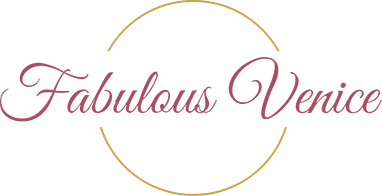Cannaregio
Cannaregio
Cannaregio is the largest district of Venice, after Castello (The castle). Is located north of the Grand Canal and borders the districts of San Marco, Santa Croce and Castello. It is the most populous district of Venice, with around 15,000 inhabitants. It can be easily reached on foot from the train station in a few minutes.
Church of the Scalzi or Santa Maria di Nazareth
Adjacent to the train station, Cannaregio, 54.

Recently restored, it is a sumptuous baroque church with fine frescoes by Gianbattista Tiepolo. A notable point of interest is also the presence of the Mystical Garden, with its medicinal plants, including Melissa. Here you can purchase Melissa Water, the miraculous remedy that cures all ills, the manufacture of which has been assigned exclusively by the government of the Serenissima to the Discalced Carmelite monks since 1754 and which continues today.
Visits to the garden must be booked here: visitegiardinomistico@gmail.com or:
info@giardinomistico.it
The Church of San Geremia the Prophet
Cannaregio, Campo San Geremia, 334
Since 2018 it has also held the title of Sanctuary of Saint Lucia, much visited by those with vision problems, because Saint Lucia was martyred under the emperor Diocletian, not 303 AD. which made her tear her eyes out.
Palazzo Labia
Cannaregio, campo S. Geremia.
A majestic example of Baroque architecture, it houses a notable cycle of paintings by Gianbattista Tiepolo. However, it is not normally open to the public as it is not a museum, but the Venetian operational headquarters of the RAI – Italian Radio and Television.
Santa Maria dei Miracoli (Church of Miracles)
Cannaregio, Campo dei Miracoli, 6075
Very particular because it is covered with splendid polychrome marbles, both outside and inside. The church was built to encourage the cult of the sacred image which today can be seen in the center of the main altar. In the second half of the 1400s this image was considered miraculous and the inhabitants wanted to enhance it by building the church around it.
Scuola Grande della Misericordia (Great School of Mercy)
Cannaregio, 3599
It was for many years one of the main centers of sporting life in Venice because it was the best-known basketball court in the city and home to its team, Reyer. For many it was the most beautiful basketball court in the whole world. Now it is a place that can be used for exhibitions, conferences, cultural and social events.

Madonna dell'Orto (Madonna of the Vegetable Garden)
Cannaregio, Campo della Madonna dell’Orto.
Different from all the other churches in the city, it preserves various works by Tintoretto, who lived nearby and is buried here. It is one of the rare examples visible today of the use of terracotta mattini for flooring and facade. Remarkable in particular is Tintoretto’s “Presentation of the Virgin in the Temple” because it represents an episode from the apocryphal gospels and not from the ones we know.
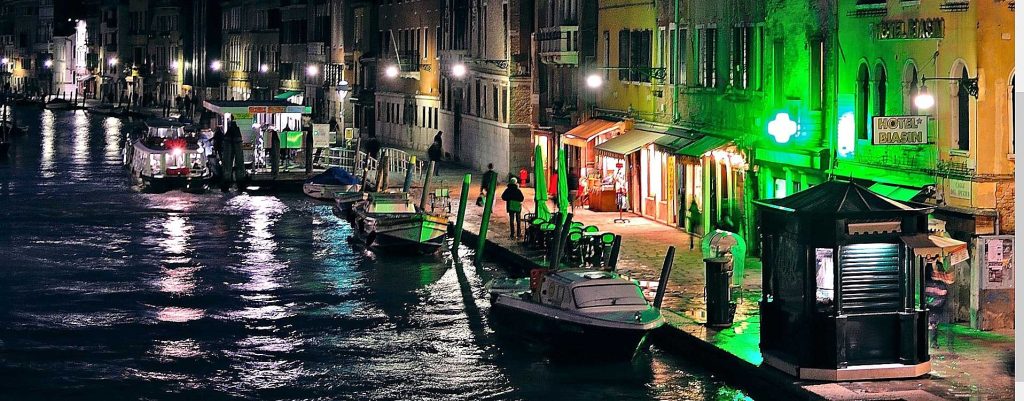
Cannaregio Canal
It is between the Guglie bridge and the Three arches bridge. It allows boats to pass from the northern lagoon to the Grand Canal. It is one of the main communication routes for the whole city because both public transport and supply boats pass through it. It is one of the liveliest places of Venetian life, with its schools and the entrance to the Jewish ghetto.
Ponte delle Guglie and Strada Nova (New Avenue)
If from the Ponte delle Guglie you go straight instead of turning around the Cannaregio Canal, enter the Strada Nova. This is the very busy main communication route between the station and Rialto. For its construction, half the city was gutted in a series of subsequent interventions. There are all sorts of shops and stalls. A curiosity: about halfway along the route, in the Campiello de L’Anconeta there was a large, richly frescoed cinema. After many years of abandonment it has now become a supermarket, but the restoration has kept the valuable decorations visible, thus becoming the most beautiful supermarket in Italy.
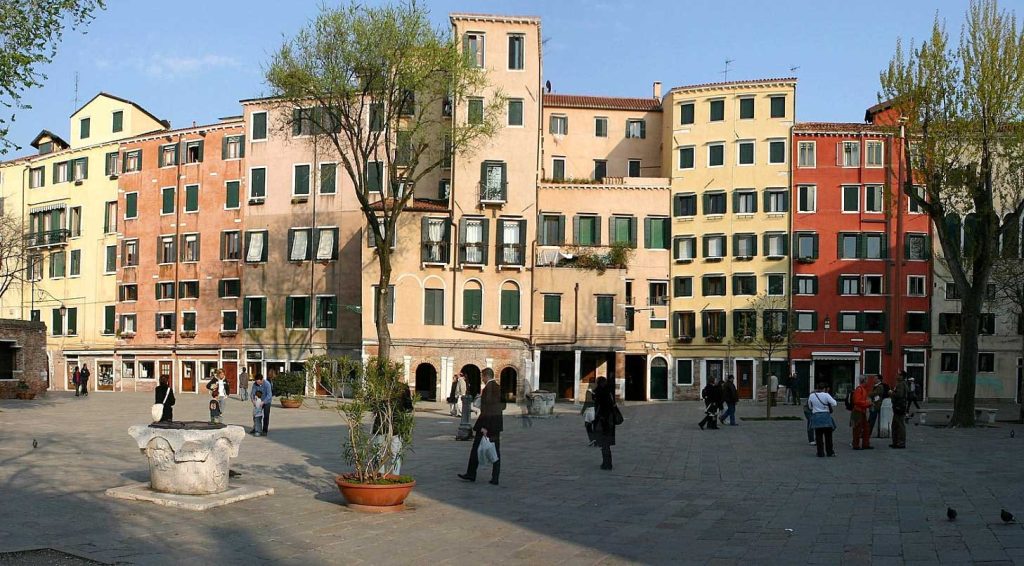
The Jewish Ghetto
From the Fondamenta di Cannaregio, on the side of the canal of the same name, you can enter the historic Jewish Ghetto of Venice, walking along the Calle del Forno. With a decree dated 29 March 1516, the Senate of the Serenissima Republic of Venice locked up the Jews present in city, segregating them from the rest of the population: thus the first and oldest ghetto in Europe was born. Here you will find important places of Jewish and Venetian culture. Then also two typical restaurants, art galleries, Jewish bread and sweets, the ancient pawnshops and a welcoming Venetian atmosphere.
Relevant places:
- Spanish Synagogue, Levantine Synagogue, German Synagogue, Canton Synagogue, Italian Synagogue.
- Monument to the deportees.
- Oven of unleavened bread.
- Red counter.
- Ghetto bookshop.
- Jewish Museum
Not all synagogues can always be visited, consult the dedicated website: https://www.ghettovenezia.com/ for updates and for guided lives and tickets.
Fondamenta degli Ormesini
The center of local nightlife from 6pm until late at night. Spritz, Venetian cicchetti (fish) and typical dishes for all tastes.
Campo dei Mori
With its statues of Saracens and Ottoman markets. One has a lucky iron nose, the Rioba, much loved by the Venetians. There is also Tintoretto’s house, under which today there is one of the most beautiful and active Venetian art workshops. Tintoretto’s workshop specializes in historical typography and fine art prints. Its courses and its small but refined exhibitions attract enthusiasts from all over the world.
Savrognan Park
Place to rest on hot summer days, cool and tree-lined.
Villa Groggia Park
Beautiful cool and shady park. There are various neighborhood businesses here and it contains a popular theater and theater school.
King's Bay
One of the quietest, most hidden and coolest places in summer. It is not always marked on maps with this name. It is located in front of the San Giobbe University Campus, but on the other side of the Canal, in Sacca San Girolamo, at the entrance to the Cannaregio Canal.
Art Craftsmanship
Leave aside the Chinese junk, everything for one euro. Here there are real craftsmen-artists:
- Tintoretto’s workshop, Fondamenta dei Mori, 3400. See above for description.
- Fallani screen printing, Cannaregio, 5001/A. One of the most famous Italian art serigraphs. All the major artists of the 20th century passed here.
- Orsoni furnace. Cannaregio 1045-1045/A. It is the last historic furnace in Venice that has been using the same methods since 1888 to produce 24K gold leaf mosaics, colored gold and Venetian enamels. Visiting it is spectacular.
- Mino and Valeria – mosaicists and artists. Fondamenta della Misericordia, 2624. Small and refined art workshop. Not always open because they work for pure pleasure.
- Atelier Nicolao, Calle Loredan 12590 (side of the Fondamenta della Misericordia). Extraordinary tailoring laboratory for historical clothing, costumes of all kinds for cinema, theatre, opera and events. He works with major cultural institutions around the world. It has thousands of costumes of all kinds.
- Fonderia Artistica Valese, Fondamenta Madonna de l’Orto (workshop. The historic foundry of Venice. Practically all the bronze pieces you see in the city (door knockers, bells, decorations, handles, knobs, statuettes, the arms of the San Marco lanterns ) leave here. If you want to make purchases, however, it is better to go to the San Marco shop, in Calle Fiubera 793.
- Officina Fratelli Zanon, Cannaregio 3213, Calle dei Riformati. Legendary blacksmith shop. The two brothers who run it, Francesco and Paolo, are the second generation. The workshop is famous for its historic partnership with the famous Carlo Scarpa, famous for having created the Querini Library, the Olivetti shop in Piazza San Marco and much more. However, they are elderly without heirs.
- Forcolaio Matto, Cannaregio 4231, Ramo dell’Oca. A side street of Strada Nova. One of the three shops that build oars and forcole. This is a very relevant activity for Venetians who use rowing boats very often in daily life and for regattas. Even if you don’t take home a 5 meter long oar, the shop also has other things to offer you and Pietro Dri is available, upon reservation (info@ilforcolaiomatto.it) to reveal the secrets of his work.
Franchetti Gallery at Ca' D'oro
Cannaregio 3932, Calle Ca’ d’Oro, side of Strada Nova.
One of the most famous Venetian palaces overlooking the Grand Canal. The palace, built in the second half of the 1400s, shows the transition from the Gothic to the Renaissance style. Inside there is the Franchetti gallery, a small and beautiful museum that displays an art collection belonging to Baron Giorgio Franchetti. It houses Mantegna’s San Sebastiano and a great variety of bas-reliefs, sculptures, bronzes and paintings from the Venetian, Tuscan and Flemish schools.
Casinò
Calle Seconda del Cristo, 2040. Side of Strada Nova.
The Venice Casino was founded in 1638 and is recognized as the oldest gaming house in the world. It is located on the second floor of the Ca’ Vendramin Calergi palace. There are also two luxurious restaurants.
Food. A few targeted tips
- At Cicheto. Cannaregio 367/A. Calle della Misericordia (side street of Lista di Spagna, near the station). Very small, but it makes a very refined traditional bed. You can find the typical Venetian fish cicchetti at the counter and you can have lunch if you are lucky to find a place, but it is better to book.
- Trattoria da Marisa. Fondamenta S. Giobbe, 652 (on the Cannaregio Canal. According to many, one of the best places for fish cuisine. The place is small and must be booked well in advance to find a seat in the evening. At midday simpler and cheaper dishes. It is also frequented by students from the nearby economics faculty.
- Crepes House by PePe. Fondamenta S. Giobbe, 548/B. A very original place. Its crepes with a thousand variations are unique in the city and much appreciated by those who prefer street food to restaurants.
- Ca’ Sagredo. Campo Santa Sofia, 4198/99. Refined hotel on the Grand Canal. There is a panoramic terrace for aperitifs and cocktails and a beautiful restaurant that directly overlooks the Grand Canal. Luxurious.
Book now
Appartamenti
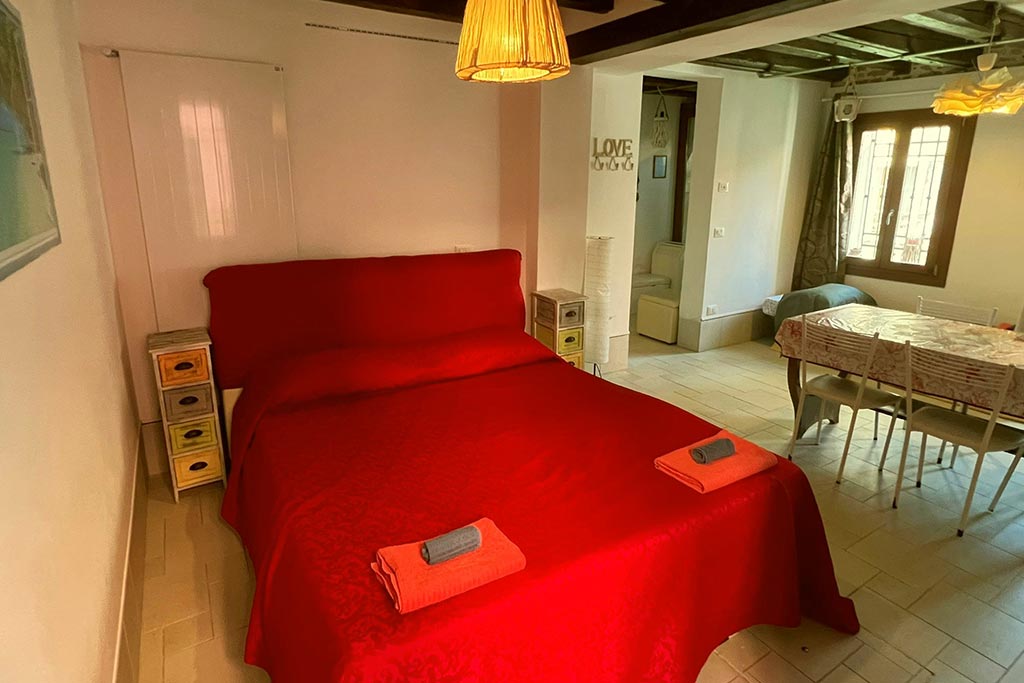
Gondola show
- 4 ospiti
A 700 metri dal Ponte di Rialto e a 300 metri dalla Ca’ d’Oro, offre la vista sui canali.
Zona: Cannareggio
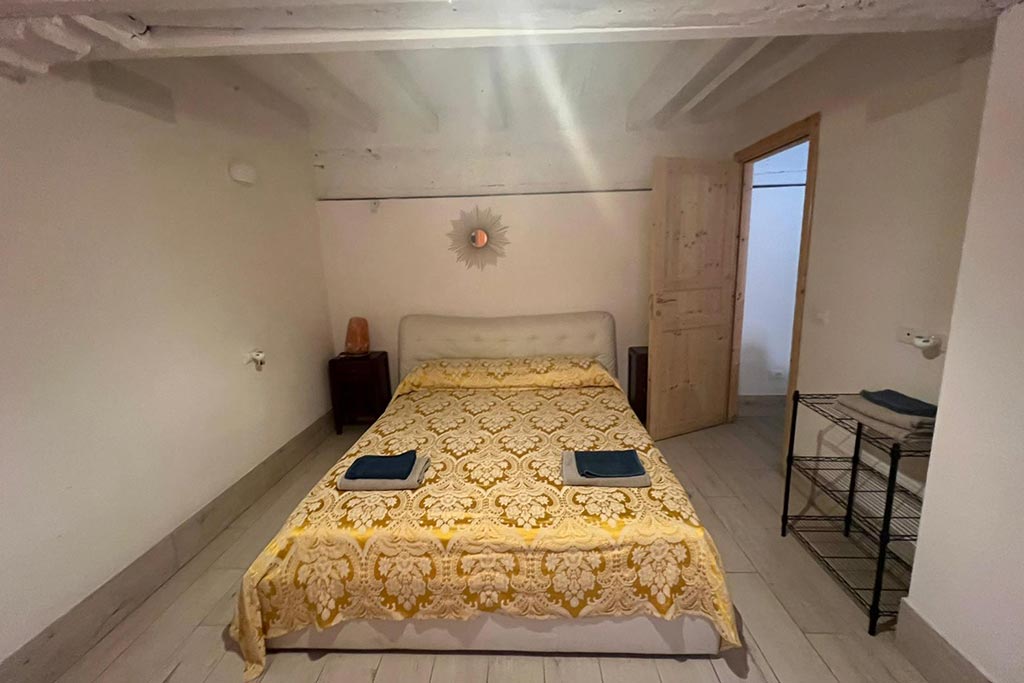
Golden place
- 3 ospiti
A 400 metri dalla Basilica di San Marco e da Palazzo Ducale.
Zona: Cannareggio
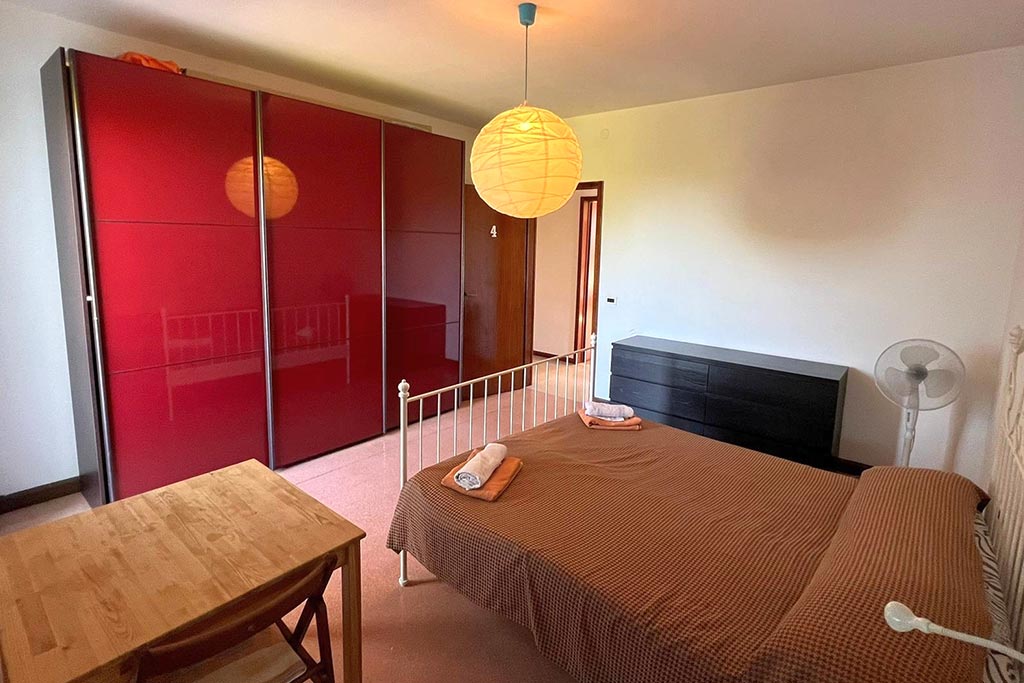
8 minutes
- 9 ospiti
A 8 minuti dall’aeroporto, l’appartamento con balcone e vista mare si affaccia sul giardino.
Zona: Campalto
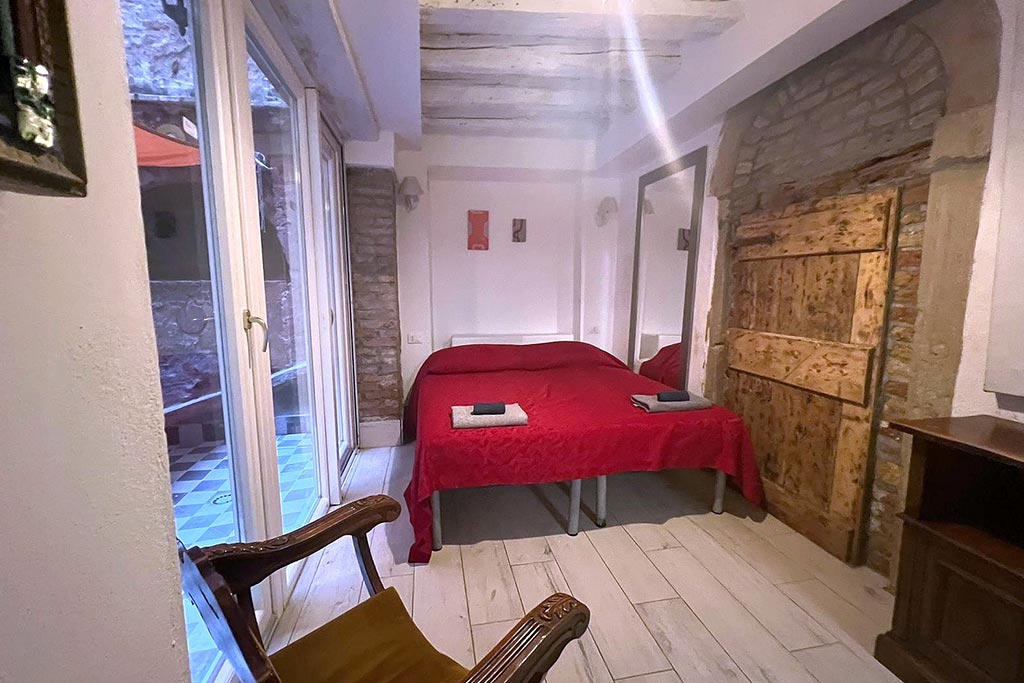
The secret garden
- 3 ospiti
A 600 metri dalla Ca’ d’Oro, l’appartamento offre un giardino e una terrazza.
Zona: Cannareggio
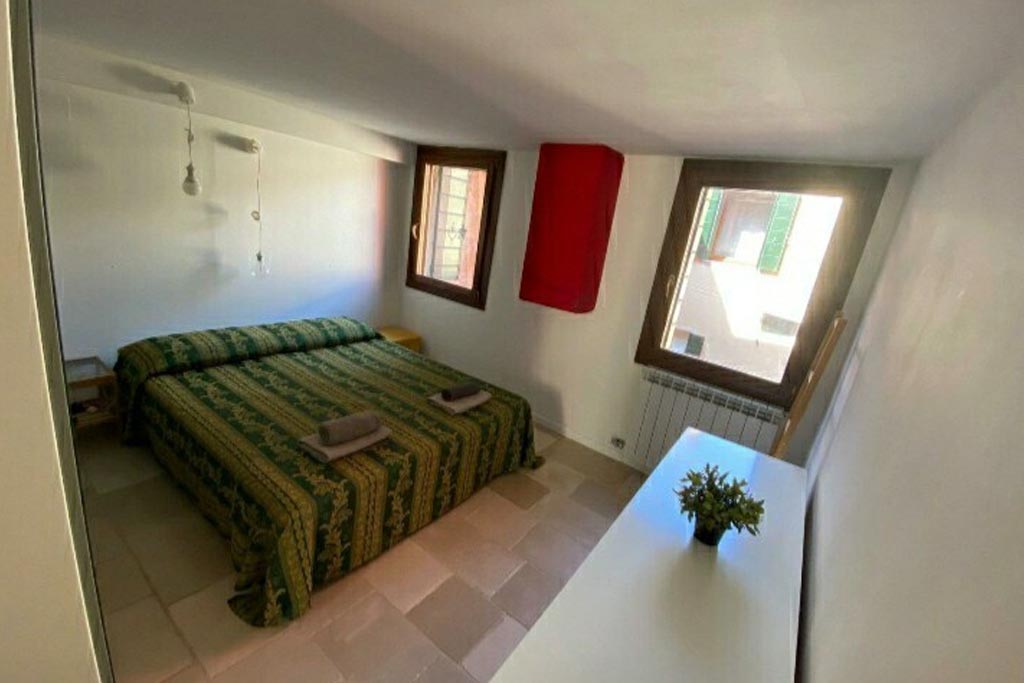
Arsenale
- 4 ospiti
Rilassati in questo spazio tranquillo in posizione centrale.
Zona: Arsenale
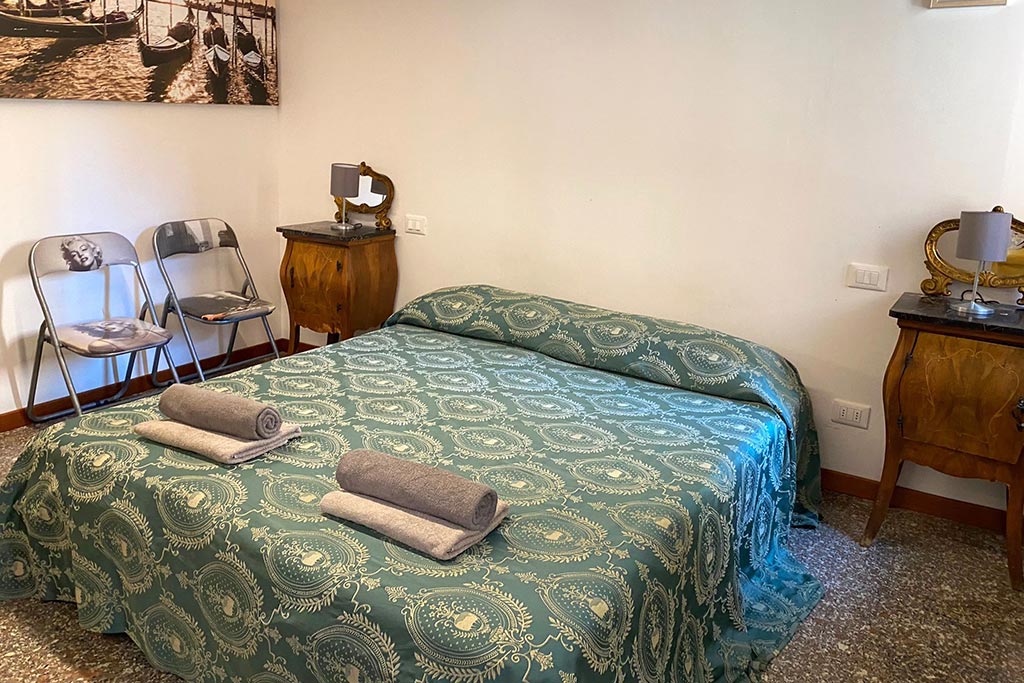
Lovely Central
- 5 ospiti
Appartamento confortevole di due camere e due bagni.
Zona: Campo Do Pozzi
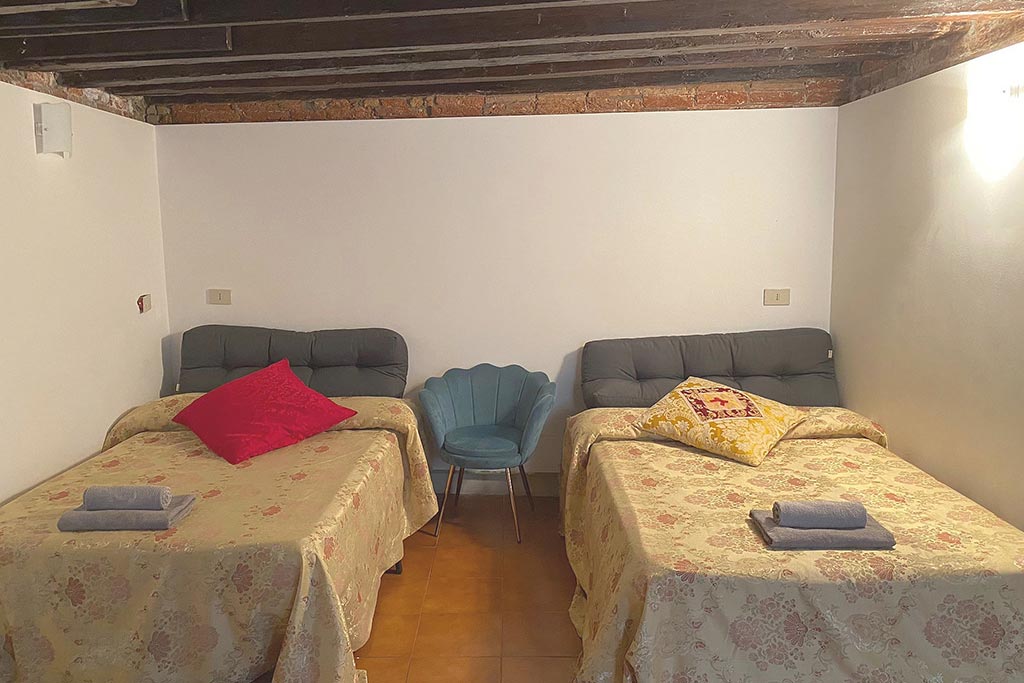
Luky palace
- 2 ospiti
Appartamento molto carino per due persone nascosto in una corte silenziosa e centralissima.
Zona: Castello
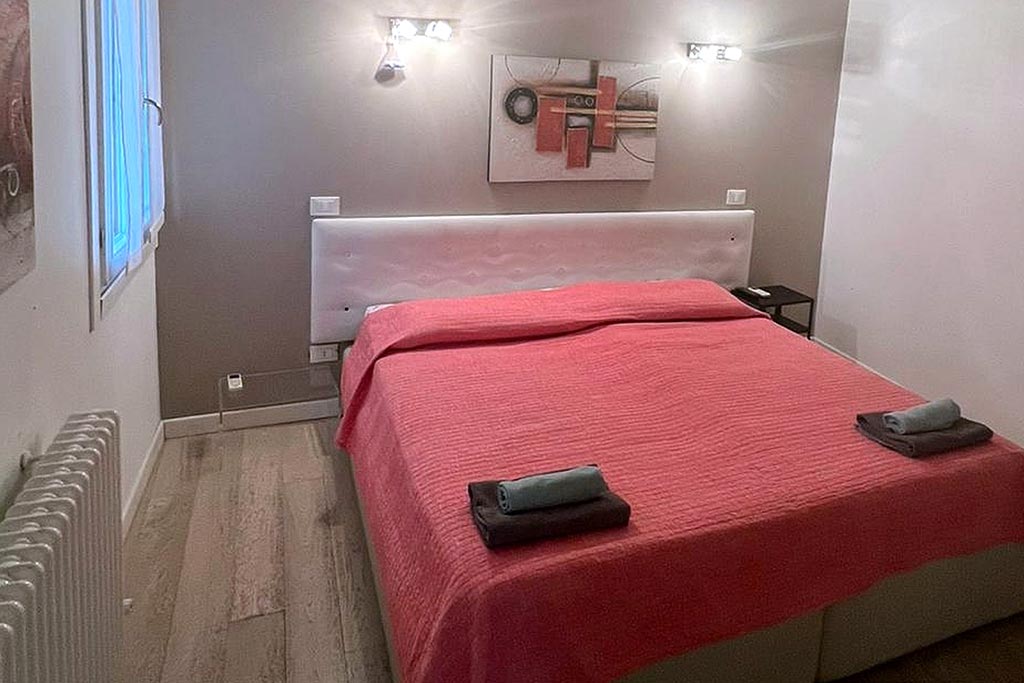
Rialto Design
- 2 ospiti
Caratteristica palazzina dotata di quattro camere disposte su tre piani e una cucina.
